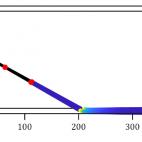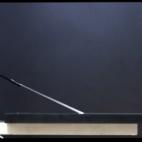PhD student: D. Liprandi
Ph.D. degree on 24/10/2022
During the last two decades, phenomena present in distinct structures such as the mussel foot, spider-silk anchorage, or gecko pads have motivated growing interest in biological and bio-inspired adhesion fields. Research has shown that highly tunable and efficient adhesion is achieved by nature thanks to a combination of non-linear mechanical behaviour of biological materials, adhesion-friction interactions, and hierarchical structures.
Many studies performed in recent years have compared theory and experiment based on the widely developed theory of tape peeling. Exact solutions exist for a huge variety of properties, including nonlinear pre-strained tapes, multiple contacts, sliding and friction interactions, and patterned tapes.
Huge advancements have also been made in the development of numerical methods, which are able to combine such properties and thus better represent the empirical behaviour of complex tape-based geometries. However, a unified framework and nomenclature regarding numerical peeling models is still missing, eventually leading to excessively simplified or unverified models that cannot capture mechanisms involved in biological and bio-inspired adhesion phenomena.
To overcome these issues, during my PhD I’ve studied the theories hiding between tape peeling phenomena, from commercial adhesive tape detachment to the walking behaviour of a gecko. This study lead to the development of new numerical models for two- and three-dimensional peeling. These new models were able to explain the mechanical behaviour of complex structures such as spiderweb anchorages.
During my last year I’m focusing on the development of an open-source tool based on Python, C++, Shell, and free libraries to provide symbolic and numerical solutions to tape peeling problems. This tool supports linear and non-linear constitutive laws, single and multiple tape-peeling, adhesion-friction and adhesion-sliding laws, and finally it includes a Graphic User Interface (GUI) for stand-alone usage. Its use could help scientists and engineers quickly visualize the evolution of a particular adhesive structure, including the expected maximal detachment force and released energy.


